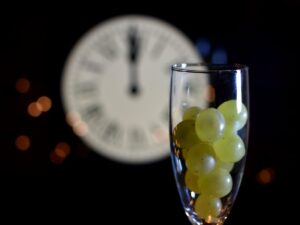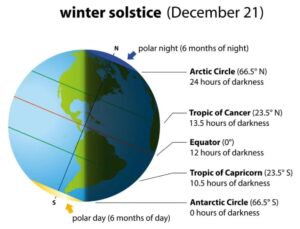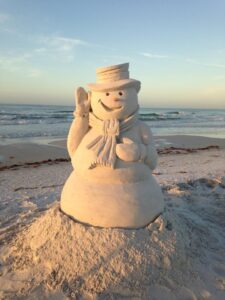 Are you interested in learning more about your ancestry? The Church of Jesus Christ of Latter-Day Saints’ History/Genealogy Library is now open to the public on Tuesdays and Thursdays from 8:00am – 2:00pm. Call 482-8159 during these hours to arrange an appointment to use their services. All services are completley free including Family Search and Ancestry.
Are you interested in learning more about your ancestry? The Church of Jesus Christ of Latter-Day Saints’ History/Genealogy Library is now open to the public on Tuesdays and Thursdays from 8:00am – 2:00pm. Call 482-8159 during these hours to arrange an appointment to use their services. All services are completley free including Family Search and Ancestry.
Category: History
Dinosaur Story Time

Tomorrow at 9:15pm, Miss. Alicia of the Jackson County Public Library will be hosting another wonderful story time. This month’s theme is dinosaurs; come out to hear a dino tale and create a hatching dinosaur coloring sheet.
Florida and WWII: Temporary Exhibit
 The Florida Historic Capitol Museum in Tallahassee is hosting a special exhibit until March 20th on World War II. The exhibit opened on the 80th anniversary of Pearl Harbor. Rendezvous with Destiny: Florida and WWII is a temporary exhibit that will provide an oral history of many of the Floridians who served on the front lines and at home during the war. When the U.S. entered WWII, Florida was still a mostly rural and agricultural state. It was relatively unpopulated compared to the rest of the country. The exhibit will explore how the war impacted Florida’s expansion and how Florida contributed to the war effort in turn. The exhibit was developed through a partnership with Camp Blanding Museum and the Human Experience at Florida State University.
The Florida Historic Capitol Museum in Tallahassee is hosting a special exhibit until March 20th on World War II. The exhibit opened on the 80th anniversary of Pearl Harbor. Rendezvous with Destiny: Florida and WWII is a temporary exhibit that will provide an oral history of many of the Floridians who served on the front lines and at home during the war. When the U.S. entered WWII, Florida was still a mostly rural and agricultural state. It was relatively unpopulated compared to the rest of the country. The exhibit will explore how the war impacted Florida’s expansion and how Florida contributed to the war effort in turn. The exhibit was developed through a partnership with Camp Blanding Museum and the Human Experience at Florida State University.
Lucky New Year’s Food Traditions
Food is an important part of New Year’s traditions. Listed below are some lucky dishes traditionally eaten around the New Year to bring good fortune in the year to come.
Hoppin’ John: a Southern menu staple originating from the enslaved Africans in the South Carolina Low Country. It is a mix of black-eyed peas, rice, and pork. The black-eyed peas shape to coins, the greens signify money, and the cornbread stands for gold.

King Cake: traditionally eaten on January 6th (i.e. Twelfth Night, Epiphany), the King Cake is a Louisianane favorite. It is a sweet ringed king cake topped with colorful icing and sprinkles; it is baked with a trinket hidden inside. The lucky person who finds the trinket is named “king” or “queen” for the day.
Tamales: bundles of masa stuffed with meat, wrapped in corn husks and steamed. They arrived in Los Angeles and San Antonio in the 1870s. They were sold by steet vendors from Mexico, and have since come to symbolize family as generations historically gather in the kitchen to make the labor-intensive food.
Toshikoshi Soba: a soup with buckwheat “year-crossing” noodles. Soba is a New Year’s Eve tradition in Japan and is now practiced in the U.S. The long, thin noodles symbolize a long, healthy life, and date back to the 13th or 14th century, “when either a temple or a wealthy lord decided to treat the hungry populace to soba noodles on the last day of the year.”1
Grapes: las doce uvas de la suerta is a Spanish tradition also known as the 12 lucky grapes. The tradition holds that eating 12 grapes at the stroke of midnight—one for each chime of the clock—will bring good luck in the coming year. According to the superstition, failing to finish all 12 in time will mean misfortune in the year to come.
Lentils: an Italian New Year’s Eve feast favorite. Round and shaped like a coin, they’re a symbol of prosperity. Lentils are often served with pork sausage.
Pork and Sauerkraut: a savorful, slow-cooked favorite for those in Pennsylvania and Ohio. The dish is said to bring good luck and progress; pigs are known to root forward and sauerkraut is made with cabbage, which symbolizes riches, prosperity, and a long life. It is a Germanic tradition that was brought to the U.S. by the Pennsylvania Dutch.
Christmas Eve
Happy Christmas Eve! Looking for something fun to do to celebrate today? Check out the list of activities below for ideas:

- Look at Christmas lights! Go for a drive or a walk in the neighborhood. Make it extra special and bring along hot chocolate and cookies.
- Watch your favorite holiday movies or TV episodes! Make some popcorn, gather the family, and pick a feel-good film to enjoy.
- Play a game with the family. Include some spiked eggnog for the adults and hot chocolate for the kids.
- Build anticipation for tomorrow by allowing everyone to open ONE gift before bed! Some families pre-choose the gift to coordinate matching pjs for Christmas morning.
- Bake and decorate cookies for Santa. Don’t forget to leave out some carrots for the reindeer.
- Track Santa with NORAD – while the North American Aerospace Defense Command spends most of the year scanning the skies for the defense of Northern America, on Christmas Eve they also keep an eye out for Santa and his sleigh. Help get the kiddos in bed on time, and check out the NORAD Santa Tracker website.
Winter Solstice
Today is the Winter Solstice! This is the shortest day and longest night of the year, and occurs annually between December 20th and 23rd depending on the year. Did you know that the Winter Solstice festival in Ancient Rome was called Saturnalia? Saturnalia began on December 17th and lasted seven days; it was held in honor of the Roman god of agriculture and harvest, Saturnus. 
In fact, it is a combination of Saturnalia and Yuletide traditions that helped create modern Christmas as the world celebrates it today. Some of these traditions include (1) the reliance on evergreen plants which is represented by Christmas trees and evergreen decor, (2) a celebration lasting 12 days, (3) the use of mistletoe which was believed to have supernatural healing abilities, and (4) the figure of Old Man Winter or Santa Claus.
National Poinsettia Day

Christmas Card Day
Tomorrow is National Christmas Card Day!

Christmas cards as we know them today were created in 1843 to encourage the use of the new British postal system. They were the outcome of the combined effort of Sir Henry Cole and his artist friend, John Horsley. Cards were originally sold for the equivalent of 24 cents. Thanks to the rise of the printing press, sending Christmas cards became a standard holiday affair by the end of the 1860s. Nowadays, National Christmas Card Day is designed to help people spread cheer and joy during the holiday season. So grab your supplies today in anticipation of creating, filling out, and sending your annual holiday cards to your friends and family tomorrow.
Snow in Florida
 Did you know that it has reportedly snowed 24 times in Florida since 2000? Snow occurs almost exclusively in northern Florida, so living in the beautiful Panhandle and surrounding areas means you’re more likely to experience snowfall here. However, snow is less likely to stick to the ground here; flurries, sleet, and light snow are more probable. Florida has also experienced ocean-effect snow. Ocean snow is an effect produced when a plume of Arctic air produces widespread record low temperatures and light snow flurries.
Did you know that it has reportedly snowed 24 times in Florida since 2000? Snow occurs almost exclusively in northern Florida, so living in the beautiful Panhandle and surrounding areas means you’re more likely to experience snowfall here. However, snow is less likely to stick to the ground here; flurries, sleet, and light snow are more probable. Florida has also experienced ocean-effect snow. Ocean snow is an effect produced when a plume of Arctic air produces widespread record low temperatures and light snow flurries.
Small Business Saturday

Small Business Saturday is an annual holiday that celebrates small businesses and encourages consumers to shop locally at independently-owned businesses. It was founded in 2010 by American Express, and has grown into an event that rivals Black Friday and Cyber Monday – both annual shopping holidays that put big conglomerates over locally-owned businesses. Small Business Saturday draws attention to the importance of small businesses on local and national economies. This year it is more important than ever to support this annual event; small businesses were hit hard throughout the pandemic and are still closing at an alarming rate! Meanwhile, big-box retailers are seeing record-high sales and have been for well over a year. So visit town today, get started on holiday shopping, and support your community!